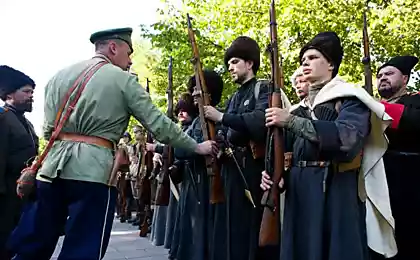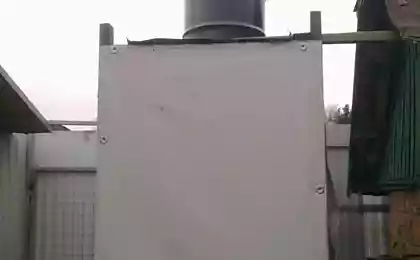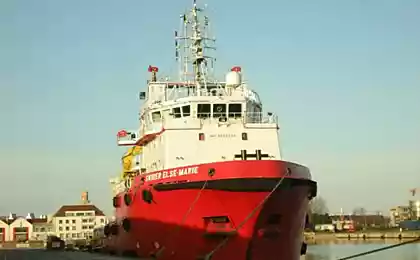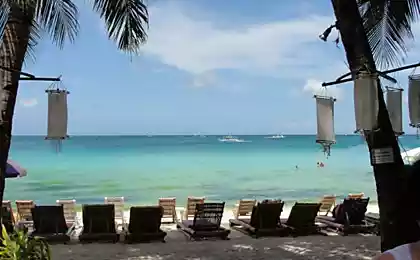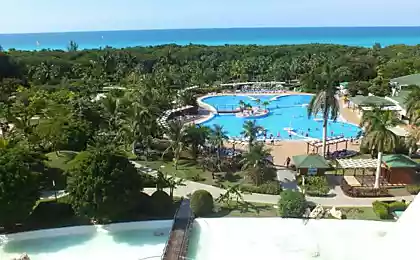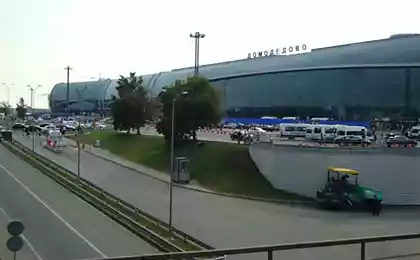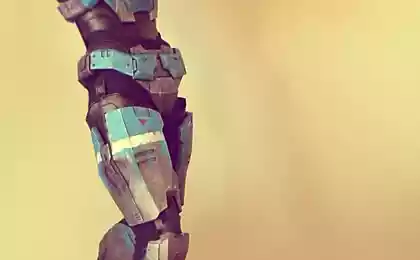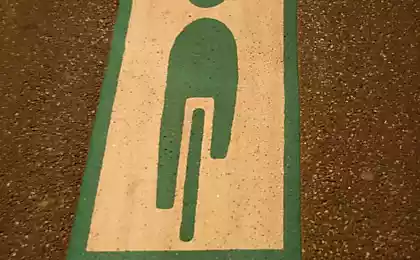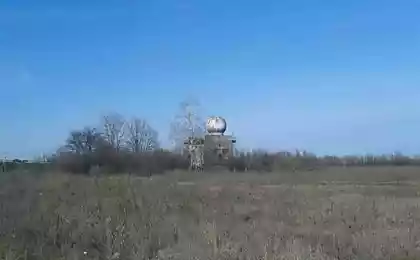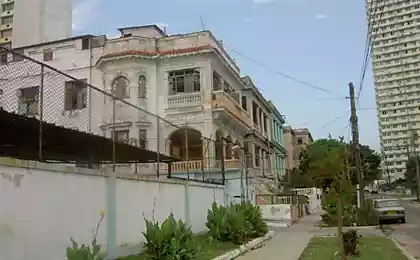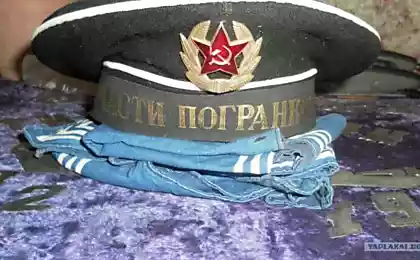1243
Scouts
During the Great Caucasian war of the XIX century effectively acted kind of Cossack Spetsnaz - scouts (from the word formation, that is, lying reservoir) - hiking team and part of the Black Sea, and then the Kuban Cossack Army
The main task of Plast was to protect the village from a sudden attack of the Caucasian mountaineers. To this end, they were instructed to maintain a continuous monitoring of the cordon line of hiding places-secrets lie kind of live trap in the ways of possible penetration of the enemy deep into the Cossack lands.
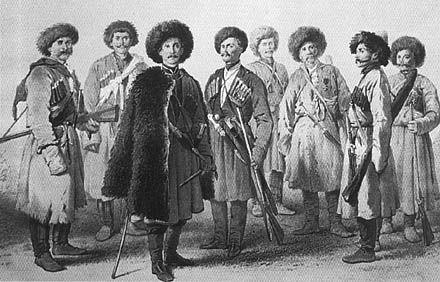
TEAM SPECIAL PURPOSE
However, one observation of the stationary points of the problem was not limited Plast. In the hot summer and severe winter they made raids on enemy ground, patrolled on both banks of the Kuban, open unknown paths and roads in the swamps in the border river, designated places known only to them labels, opened the traces, timely detection of preparations for the raid. Choose a convenient time, scouts were applied to the current terminology, "point" strikes on a small detachment of Highlanders, was going to commit predatory raid destroyed their leaders, drove herds of horses, thus limiting the mobility of the enemy.
At first scouts were located along a line in small groups, as they called them, the "Partnership" or "battery". Each battery relied small signal cannon from which the disturbing shot when it detects enemy coming to raid a large force. In 1842, a staffing cavalry regiments and battalions of foot of the Black Sea Cossack troops were included bellies team number 60 and 96 people each. Weapons they had more modern than other Cossacks, in particular, the first to receive long-range fitting with fixed bayonets. Given the specificity of difficult and full of dangers Service scouts were appointed and increased in comparison with other Cossacks salary.
Martial traditions and tactics Plast formed over the centuries. In the campaign they were in advanced reconnaissance patrol, at rest - in an ambush in the outposts. In the field fortifications - in constant search of the surrounding forests and gorges. At the same time scouts at night in groups of 3 to 10 people to penetrate deep into the location of the enemy, watching him, overheard conversations.
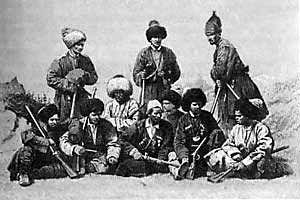
Scouts and dressed like mountaineers, and the poorest. Each search gorges and Debra thoroughly wears uniforms. Hiking decoration Plastun were Circassian, battered, covered with colorful patches; threadbare, poryzhelaya hat, usually cocked jauntily on his head; chuviaki from wild boar skin, hair out. In the hands of a true union with the saber at the waist - a dagger and so-called personal belongings: powder flask, bullet pouch, zhirnik nipple, awl from the horn of a wild goat, the bowler. Took with them to find and hand grenades (if you squeeze the enemy, lighted wicks and threw grenades, and themselves - let God feet). Sometimes equipment complement balalaika or violin - to entertain himself and his comrades in the rare moments of rest.
In the interests of stealth reconnaissance scouts were allowed to wear even dyed his beard. Many of them are aware of the local dialects, customs and traditions. Some villages have been friends Plast - Kunakov, inform them of the enemy plans. However, information obtained from even the cronies-Kunakov always subject to scrutiny.

BEST OF THE BEST
Attracted scouts and to unlock the besieged enemy Cossack fortifications. So it was, for example, when the Highlanders of about three thousand people have attempted to capture the Crimean strengthen located behind the cordon line on the river Kuban. To help garrison Ataman Babic sent 40 Plast.
The commander of the detachment of Cossacks Kryzhanovsky decided to pull over the greatest possible number of attack. He scattered and hid Plast on the river behind the trunks of trees, brought during the spring flood. Accurate shooters fire inflicted heavy losses to the enemy. Attempts to mountaineers in the horse and on foot to crush a handful of brave men were unsuccessful. After a two-hour battle scouts in cooperation with the garrison to strengthen forced the enemy to retreat into their territory.
When clashes during the raid reconnaissance scouts almost never given into the hands of enemies. It was considered a rule that Plastun rather lose his life than freedom. Cleverly selected position and advance outlining escape routes, troopers were shot in the case of persecution or took refuge in silence on the ground. In both cases the enemy was afraid to attack immediately opened a small detachment of scouts, knowing the accuracy bellies shot and danger of ambush. Thus knocking "courage" from his pursuers, scouts waste. Wounded in trouble do not throw the dead - buried on the spot or possibly carried away with itself.
Experienced scouts were excellent psychologists. For example, young people have been taught that the exploration at the meeting with the enemy face to face "even the bravest of the Highlanders will not give up a little cold feet when it no one will see if the witness does not happen with long tongues. When we are not talking about the production, mountaineer loves to bright sun shining on his feat to be looked at, if not centuries, forty, forty-so-countrymen, who, of course, forty languages. " Therefore, in this situation, said veteran mountaineer is unlikely on its own to jeopardize and is likely to depart from the collision with the armed and ready for battle Cossack.
Has developed a unique system of selection in the scouts. In bellies team Cossacks were not prescribed, and choose the "old men" of the environment of reliable and proven in the warriors. Sought to take young recruits from the tried and trusted plastun dynasties in which the secrets of combat and hunting craft handed down from their fathers and grandfathers. Go picky selection could only Cossacks, capable of hard bellies service and also the natural prowess and courage have a good eye and a steady hand to shoot without a miss.
Especially stringent requirements to be met by physical training. Plastun was able to make long marches in the mountains and forests in the cold and heat, fed and hungry. Necessarily considered such qualities as patience and composure to close to the enemy to lie for hours in the reeds, shrubs and grasses, often in icy water, snow or summer in the clouds of mosquitoes annoying, not exposed the while concealing their presence careless movement.
Tactics of Plast are fully consistent with its objective, nature areas, especially enemy. Contemporaries defined it as "a wolf's mouth and fox tail." Looking behind enemy lines mainly considered to ensure secrecy of their own movements, to detect the enemy first, cleverly lure him into an ambush. Do not stay Plast Cossacks who are unable to clean up its own footprint, not mastered the art of silent movement on the cane and forest logging. Valued people who are able to read and identify traces of them preparing to raid the participants and the direction of their movement.
Crossing over to the enemy, scouts disappeared. And when the dewy grass or snow crust behind them stretched treacherous tracks, skillfully them confused, cunning, like old hares: moving forward with his back, jumping on one leg, in every possible way to hide the true direction and size of the group.
Born hunters, scouts skillfully used in the confrontation with the enemy many hunting regulations. For example, "pursue with caution."
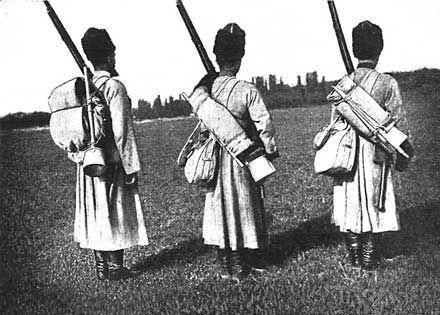
And not only in Caucasus
Outstanding quality Plast served the Fatherland, not only in the Caucasus, but also in other theaters of war. In the Crimean War (1853-1856 years), 2nd and 8th battalions Cossack bellies distinguished themselves in the battles of Balaklava and the defense of Sevastopol on the legendary fourth bastion. Scouts carried out raids in the trenches of the enemy, with a special, peculiar only to them carefully remove the guards, destroyed guns, and once captured, and with the help of the French prisoners dragged to his three enemy mortars. While on patrol, secrets in the intelligence finding, scouts pay attention to the many seemingly minor details in the work of the enemy. Opened new artillery positions, found maintenance work on digging tunnels in order to mine-laying by location Russian troops.
Looking at the Plast, the commanders of the army infantry regiments in Sevastopol began to start at their sample special teams. Selected themselves brave and shrewd soldiers gave them rare at that time in the regular army and deported to the union of the Night Watch. The soldiers took over from experienced Plast their oven mitts, habits, and even began to imitate clothing.
Excelled in Sevastopol and were awarded scouts Kravchenko, Siskin, White, Onishchenko, brothers Sopelnyaki, Semak. 2nd Battalion Kuban bellies come for St. George banner with the inscription "For the approximate difference in the defense of Sevastopol in 1854 and 1855's" 8th Battalion - St. George banner with the inscription "For distinction in the capture of the fortress of Anapa June 12, 1828 and estimated courage in defense of Sevastopol 1854 and 1855 years. "

Participated in the bellies of the Russian-Turkish, Russian, Persian, Russian, Polish and Russian-Japanese war. Twenty-four plastun battalion fought in the First World War. On the Caucasian front reconnaissance Plast penetrated into Mesopotamia (in modern-day Iraq), where contact was established with the advance units of the Allied Russian British troops. In this war, equestrian Cossack regiments was replaced by two trains in plastun battalions - three ...
In World War II the name "bellies" traditionally had some Cossack battalions, regiments and Krasnodar Plastunskaya Infantry Division.
It seems that nowadays the purpose of continuity of traditions should think about assigning special forces units distinguished honorary title "bellies».
Source
The main task of Plast was to protect the village from a sudden attack of the Caucasian mountaineers. To this end, they were instructed to maintain a continuous monitoring of the cordon line of hiding places-secrets lie kind of live trap in the ways of possible penetration of the enemy deep into the Cossack lands.

TEAM SPECIAL PURPOSE
However, one observation of the stationary points of the problem was not limited Plast. In the hot summer and severe winter they made raids on enemy ground, patrolled on both banks of the Kuban, open unknown paths and roads in the swamps in the border river, designated places known only to them labels, opened the traces, timely detection of preparations for the raid. Choose a convenient time, scouts were applied to the current terminology, "point" strikes on a small detachment of Highlanders, was going to commit predatory raid destroyed their leaders, drove herds of horses, thus limiting the mobility of the enemy.
At first scouts were located along a line in small groups, as they called them, the "Partnership" or "battery". Each battery relied small signal cannon from which the disturbing shot when it detects enemy coming to raid a large force. In 1842, a staffing cavalry regiments and battalions of foot of the Black Sea Cossack troops were included bellies team number 60 and 96 people each. Weapons they had more modern than other Cossacks, in particular, the first to receive long-range fitting with fixed bayonets. Given the specificity of difficult and full of dangers Service scouts were appointed and increased in comparison with other Cossacks salary.
Martial traditions and tactics Plast formed over the centuries. In the campaign they were in advanced reconnaissance patrol, at rest - in an ambush in the outposts. In the field fortifications - in constant search of the surrounding forests and gorges. At the same time scouts at night in groups of 3 to 10 people to penetrate deep into the location of the enemy, watching him, overheard conversations.

Scouts and dressed like mountaineers, and the poorest. Each search gorges and Debra thoroughly wears uniforms. Hiking decoration Plastun were Circassian, battered, covered with colorful patches; threadbare, poryzhelaya hat, usually cocked jauntily on his head; chuviaki from wild boar skin, hair out. In the hands of a true union with the saber at the waist - a dagger and so-called personal belongings: powder flask, bullet pouch, zhirnik nipple, awl from the horn of a wild goat, the bowler. Took with them to find and hand grenades (if you squeeze the enemy, lighted wicks and threw grenades, and themselves - let God feet). Sometimes equipment complement balalaika or violin - to entertain himself and his comrades in the rare moments of rest.
In the interests of stealth reconnaissance scouts were allowed to wear even dyed his beard. Many of them are aware of the local dialects, customs and traditions. Some villages have been friends Plast - Kunakov, inform them of the enemy plans. However, information obtained from even the cronies-Kunakov always subject to scrutiny.

BEST OF THE BEST
Attracted scouts and to unlock the besieged enemy Cossack fortifications. So it was, for example, when the Highlanders of about three thousand people have attempted to capture the Crimean strengthen located behind the cordon line on the river Kuban. To help garrison Ataman Babic sent 40 Plast.
The commander of the detachment of Cossacks Kryzhanovsky decided to pull over the greatest possible number of attack. He scattered and hid Plast on the river behind the trunks of trees, brought during the spring flood. Accurate shooters fire inflicted heavy losses to the enemy. Attempts to mountaineers in the horse and on foot to crush a handful of brave men were unsuccessful. After a two-hour battle scouts in cooperation with the garrison to strengthen forced the enemy to retreat into their territory.
When clashes during the raid reconnaissance scouts almost never given into the hands of enemies. It was considered a rule that Plastun rather lose his life than freedom. Cleverly selected position and advance outlining escape routes, troopers were shot in the case of persecution or took refuge in silence on the ground. In both cases the enemy was afraid to attack immediately opened a small detachment of scouts, knowing the accuracy bellies shot and danger of ambush. Thus knocking "courage" from his pursuers, scouts waste. Wounded in trouble do not throw the dead - buried on the spot or possibly carried away with itself.
Experienced scouts were excellent psychologists. For example, young people have been taught that the exploration at the meeting with the enemy face to face "even the bravest of the Highlanders will not give up a little cold feet when it no one will see if the witness does not happen with long tongues. When we are not talking about the production, mountaineer loves to bright sun shining on his feat to be looked at, if not centuries, forty, forty-so-countrymen, who, of course, forty languages. " Therefore, in this situation, said veteran mountaineer is unlikely on its own to jeopardize and is likely to depart from the collision with the armed and ready for battle Cossack.
Has developed a unique system of selection in the scouts. In bellies team Cossacks were not prescribed, and choose the "old men" of the environment of reliable and proven in the warriors. Sought to take young recruits from the tried and trusted plastun dynasties in which the secrets of combat and hunting craft handed down from their fathers and grandfathers. Go picky selection could only Cossacks, capable of hard bellies service and also the natural prowess and courage have a good eye and a steady hand to shoot without a miss.
Especially stringent requirements to be met by physical training. Plastun was able to make long marches in the mountains and forests in the cold and heat, fed and hungry. Necessarily considered such qualities as patience and composure to close to the enemy to lie for hours in the reeds, shrubs and grasses, often in icy water, snow or summer in the clouds of mosquitoes annoying, not exposed the while concealing their presence careless movement.
Tactics of Plast are fully consistent with its objective, nature areas, especially enemy. Contemporaries defined it as "a wolf's mouth and fox tail." Looking behind enemy lines mainly considered to ensure secrecy of their own movements, to detect the enemy first, cleverly lure him into an ambush. Do not stay Plast Cossacks who are unable to clean up its own footprint, not mastered the art of silent movement on the cane and forest logging. Valued people who are able to read and identify traces of them preparing to raid the participants and the direction of their movement.
Crossing over to the enemy, scouts disappeared. And when the dewy grass or snow crust behind them stretched treacherous tracks, skillfully them confused, cunning, like old hares: moving forward with his back, jumping on one leg, in every possible way to hide the true direction and size of the group.
Born hunters, scouts skillfully used in the confrontation with the enemy many hunting regulations. For example, "pursue with caution."

And not only in Caucasus
Outstanding quality Plast served the Fatherland, not only in the Caucasus, but also in other theaters of war. In the Crimean War (1853-1856 years), 2nd and 8th battalions Cossack bellies distinguished themselves in the battles of Balaklava and the defense of Sevastopol on the legendary fourth bastion. Scouts carried out raids in the trenches of the enemy, with a special, peculiar only to them carefully remove the guards, destroyed guns, and once captured, and with the help of the French prisoners dragged to his three enemy mortars. While on patrol, secrets in the intelligence finding, scouts pay attention to the many seemingly minor details in the work of the enemy. Opened new artillery positions, found maintenance work on digging tunnels in order to mine-laying by location Russian troops.
Looking at the Plast, the commanders of the army infantry regiments in Sevastopol began to start at their sample special teams. Selected themselves brave and shrewd soldiers gave them rare at that time in the regular army and deported to the union of the Night Watch. The soldiers took over from experienced Plast their oven mitts, habits, and even began to imitate clothing.
Excelled in Sevastopol and were awarded scouts Kravchenko, Siskin, White, Onishchenko, brothers Sopelnyaki, Semak. 2nd Battalion Kuban bellies come for St. George banner with the inscription "For the approximate difference in the defense of Sevastopol in 1854 and 1855's" 8th Battalion - St. George banner with the inscription "For distinction in the capture of the fortress of Anapa June 12, 1828 and estimated courage in defense of Sevastopol 1854 and 1855 years. "

Participated in the bellies of the Russian-Turkish, Russian, Persian, Russian, Polish and Russian-Japanese war. Twenty-four plastun battalion fought in the First World War. On the Caucasian front reconnaissance Plast penetrated into Mesopotamia (in modern-day Iraq), where contact was established with the advance units of the Allied Russian British troops. In this war, equestrian Cossack regiments was replaced by two trains in plastun battalions - three ...
In World War II the name "bellies" traditionally had some Cossack battalions, regiments and Krasnodar Plastunskaya Infantry Division.
It seems that nowadays the purpose of continuity of traditions should think about assigning special forces units distinguished honorary title "bellies».
Source

